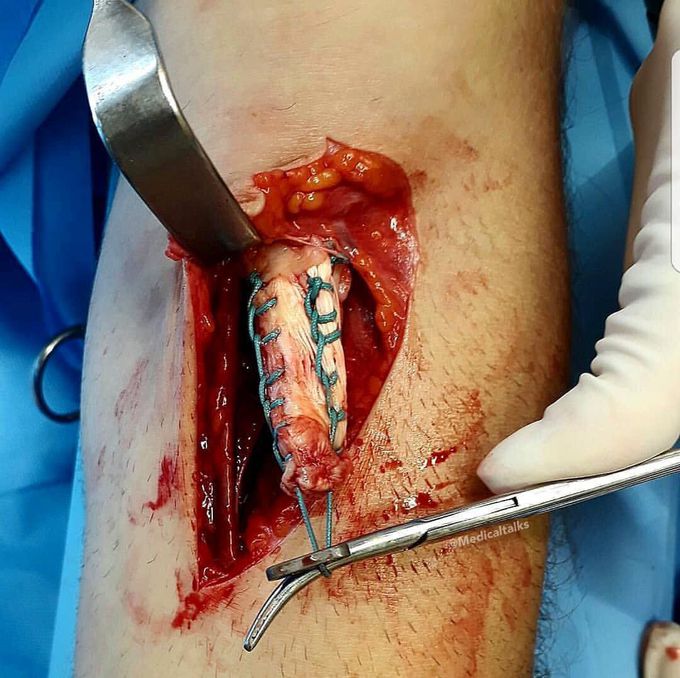


Surgical repair of a ruptured distal biceps tendon while lifting!!
The biceps muscle has two tendons that attach the muscle to the shoulder and one tendon that attaches at the elbow (distal biceps tendon). It inserts onto the radial tuberosity, a small bump on the bone near the elbow joint. A distal biceps rupture occurs when the tendon attaching the biceps muscle to the elbow is completely detached or torn from the bone, leading to substantial deficits in elbow flexion and supination. This injury occurs mainly in middle-aged men during heavy work or lifting. Often the load is heavier than expected, or the load may shift unexpectedly during the lift. This forces the elbow to straighten, even though the biceps muscle is working hard to keep the elbow bent. The biceps muscle contracts extra hard to help handle the load. As tension on the muscle and tendon increases, the distal biceps tendon snaps or tears where it connects to the radius. The patient often experiences a painful “pop” as the elbow is eccentrically loaded from flexion to extension, and later on presents with weakness and pain, primarily in supination. Physical examination may show the classic "Popeye" muscle bulge of the humerus midshaft with a complete biceps tendon rupture. A distal rupture is rare compared to ruptures where the top of the biceps connects at the shoulder. Treatment is a topic of debate and includes a conservative (nonoperative) management versus surgical repair. Generally accepted clinical guidelines advocate surgical repair consisting of tenodesis and subacromial decompression proximally (or anatomic reattachment distally) for young or athletic patients or for persons who do not want to sacrifice function and require maximum supination strength. Conservative management is considered appropriate for middle-aged or older patients and for those who do not require a high degree of supination strength in daily activities. it involves rest, followed closely by range of motion and strengthening exercises for the shoulder and elbow.
Hemodynamic stimuli&nonhemodynamic stimuliEffects of sugar on teeth

